Last-Minute NYC Holiday Gift Guide 🎁
We’ve created a holiday gift guide with presents for the intrepid New Yorker that should arrive just in time—


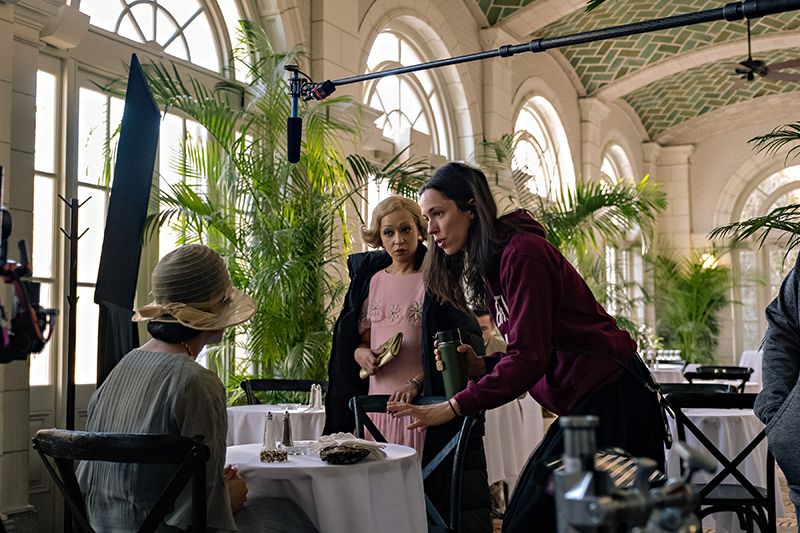
Passing is a new feature film set in 1920s New York City that premieres on Netflix today. The movie, directed by Rebecca Hall and starring Tessa Thompson, Ruth Negga, and Alexander Skarsgård, explores the intersected lives of two women on opposites sides of the color line. Tessa Thompson plays Irene “Reenie” Redfield, a married mother of two who was born and raised in Harlem and has stayed in the neighborhood. By accident one afternoon, she runs into her childhood friend Clare Kendry, played by Ruth Negga, who has been passing as a white woman. The film’s title refers to the Black men and women who had skin light enough that they could “pass” as a white person. The film is based on the book of the same name by Nella Larsen and explores the psychological impact the meeting of the two women has on each other, and how they end up desiring a part of each other’s lives.
Passing is filmed entirely in black and white, utilizing thoughtful set design to reinforce what the characters are seeing and sensing. We interviewed Nora Mendis, the movie’s production designer, to understand how she recreated the Harlem of the 1920s amidst today’s New York. Untapped New York readers will be delighted to see some of the beautiful locations, many rarely seen in most film productions, in Passing.
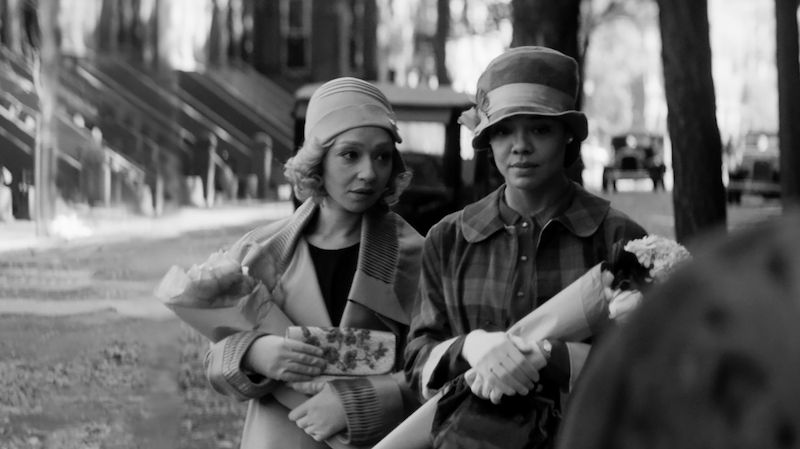
Nora herself is bi-racial and her grandmother grew up amidst the Harlem Renaissance scene. Her grandmother was known to have “passed” on occasion, much like what Irene experiences in Passing. Nora made use of her childhood photographs to create the lookbooks for the film’s sets and she also took a deep dive into the archives at the New York Public Library’s Schomberg Center for Research in Black Culture and The Cooper-Hewitt Museum.
“What’s great about this book and this movie is that they both push you to realize the strangeness of race,” Nora tells us. The issues Irene and Clare faces in the story have a “direct parallel to today,” says Norah, and the story makes the viewer/reader “identify with both characters and both of their ways of hiding.”
Here are the filming locations you will see in Passing and what Nora had to say about them!
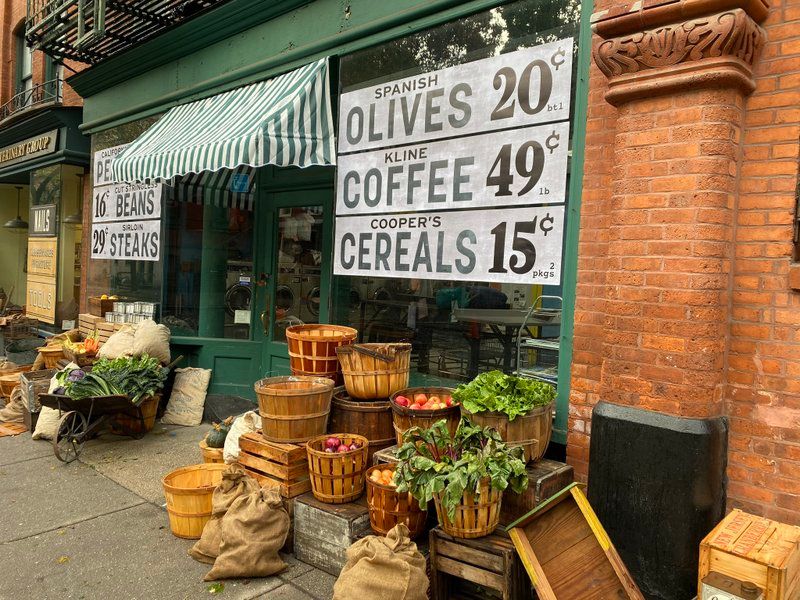
Passing opens on a hot summer day. Irene purchases a gift for her son in a toy shop. The shop proprietor and the other people in the store assume she is white, but she hides behind the brim of her hat. The spaces in Passing are all racially coded, and all the details down to the items in a store and in the window were carefully researched and curated. Nora says, “You feel the whiteness of the space and of the toys. But not just the whiteness but just the ignorance that people aren’t seeing. They don’t see her, they don’t see her discomfort, they don’t see that this toy is racist, none of that.” She jokes that they even spent half a day researching curbs and what curbs looked like in the 1920s, for the opening shot that just shows the shoes of people walking by.
The toy shop and the street scenes were filmed in Brooklyn Heights. In December 2019, Untapped New York reported on the elaborate set that had transformed the neighborhood into the 1920s. The toy shop was filmed at a furniture store called Holler & Squall off of Atlantic Avenue and other scenes were shot at the intersection of Joralemon Street and Columbia Place. Our set photographs reveal period-accurate signage, awnings, and vehicles.
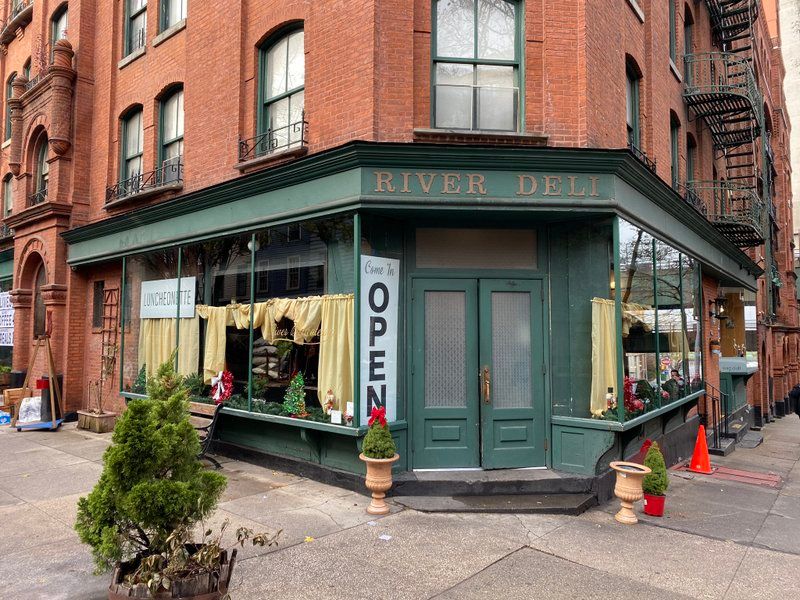
Nora tells Untapped New York, “We designed these beautiful awnings that were custom made to that space. We did a lot of research on what would have been inside or outside of a store. The way merchandising looks today, it’s not spilling out in the same way, at least not in New York City. At that time though, [as seen] through all my photos, all the references, etc., the things are coming out of the store and so when you’re walking down a sidewalk you should be maneuvering a little bit around the things from inside the store and so we tried to show that. And we got some hand-painted signage in there and painted all the windows.”
While you may not see much of the set that was created in Brooklyn Heights in the film, due to both the close camera work and the aspect ratio of the film (cropped in using Academy aspect ratio), Nora says, “You want the space to feel right and you want to give everybody the freedom to look in multiple directions. You want the actor to feel like they’re in the right space, but then yes, you do end up creating a world that doesn’t get seen on camera, necessarily. But, I’d like to think that it gets seen in the way that the acting is responding to it.”
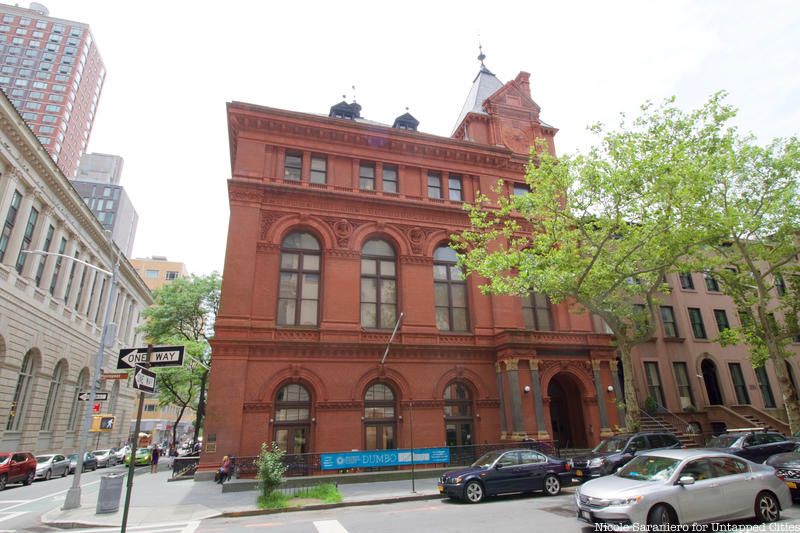
When Irene gets into a taxi from the toy store, she realizes that the cab driver also thinks she is white and suggests a stop in the Drayton Hotel. The exterior of the Drayton Hotel in Passing is filmed at the Center for Brooklyn History (formerly the Brooklyn Historical Society), also located in Brooklyn Heights. The red building, located at the intersection of Pierrepont Street and Clinton Street, was designed by the architect George B. Post in 1881. The history of the Center for Brooklyn History goes back to 1863, when it was founded as the Long Island Historical Society (when Brooklyn was part of Long Island).
The interior scenes at the Drayton Hotel were filmed elsewhere (continue reading to discover where) and the interior of the Center for Brooklyn History appears later in the film as part of a different scene.
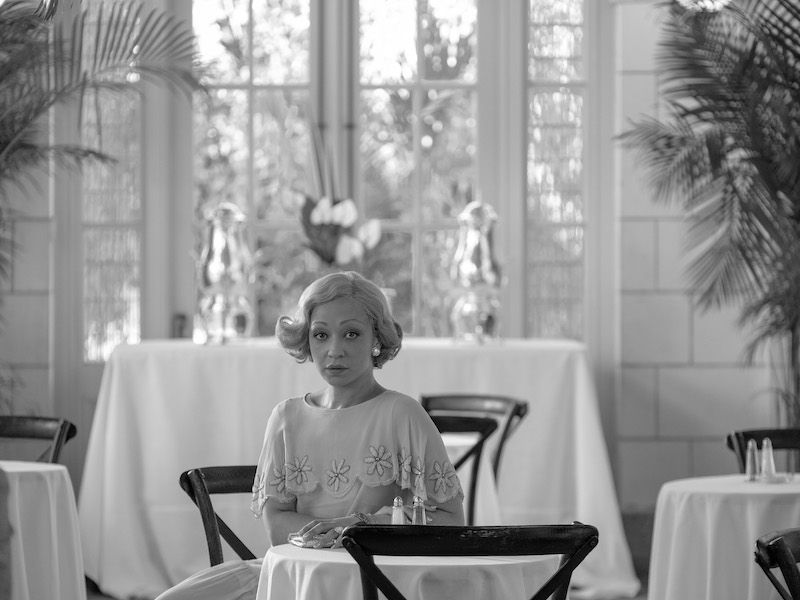
Irene cools down with iced tea inside the Drayton Hotel, where she sees Clare for the first time. This scene is filmed inside the Prospect Park boathouse in Brooklyn. Nora tells us that the location “was a choice based on historical references.” She explains that a lot of tea houses from the time period were designed to feel like greenhouses — open and airy with a lot of plants brought in. You may recognize the distinctive Guastavino tiling on the ceiling inside the boathouse and Nora says that element helped contribute to the sense of being in a greenhouse. The Prospect Park boathouse was built in 1904 and is a popular location for weddings in New York City.
If you’re looking for the hotel room filming location, when Irene meets Clare’s husband, it’s the only scene in the movie that is filmed on a soundstage.
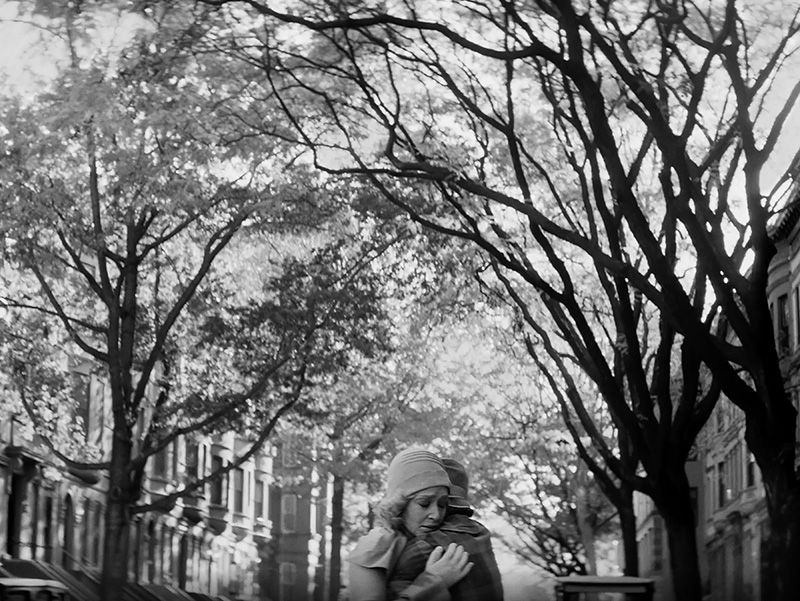
A lot of attention was paid to the filming location for Irene’s townhouse. In fact, half the shoot took place at this brownstone, located in Harlem. The home is filmed on the exterior and on the interior and needed to accurately represent Irene’s physical life and her psychological life. It was important to Nora and director Rebecca Hall that they shoot in a real brownstone, rather than recreate it (compare this to Woman in the Window starring Amy Adams, also set in a Harlem brownstone).
First, the exterior of the brownstone at 236 West 137th Street was painted in a very distinctive red so that it would pop in black and white. Nora says, “we did a fair number of tests to think about what would look good in black and white, but not be too overly jarring. Where we landed was this red that was so rich and so saturated, and then we made it glossy so that there was really a shiny aspect to it.” For the interiors, which were filmed at 356 West 121st Street, Nora went to look at the archives of the New York Public Library to see what the layouts of New York brownstones were originally like so she could situate the living spaces, and the service spaces correctly. She tells us that the brownstone they filmed in had two working fireplaces.
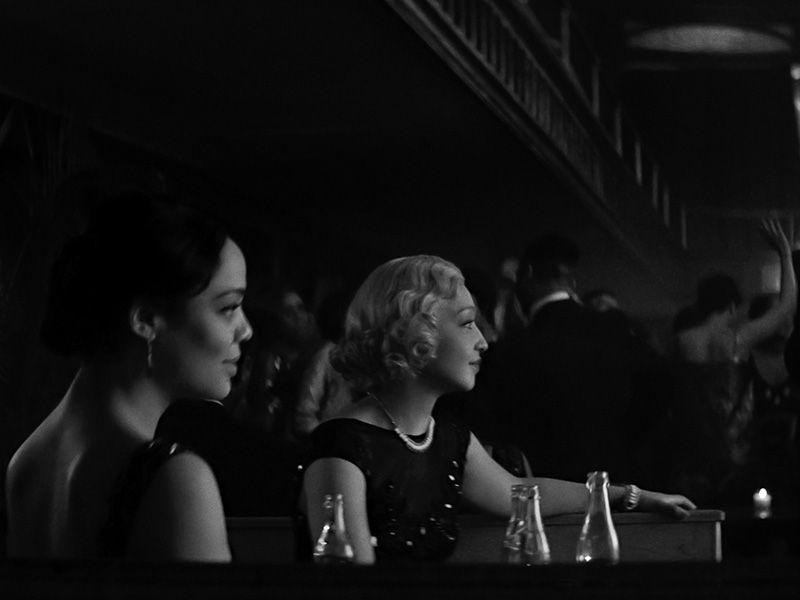
The Harlem nightclub that Irene, Clare, and Irene’s husband, Brian (played by André Holland) go to is filmed inside a church in Bushwick. The gathering hall of the Bushwick United Methodist Church, with its unique wraparound mezzanine, was used for the scene. The church uses the space for social gatherings and other events.
Nora tells us, “that balcony up on top was just incredible. It had a big huge stage and we actually did an incredible big band style drapery backdrop that you don’t really see very much. But it’s there. All that you were meant to feel is the wood floor and the bodies. It’s not meant to be clear geographically what is going on exactly. A reference for that set was the film Cold War which is done in black and white as well.” The speakeasy scene in Passing is filmed in the basement of the United Methodist Church.
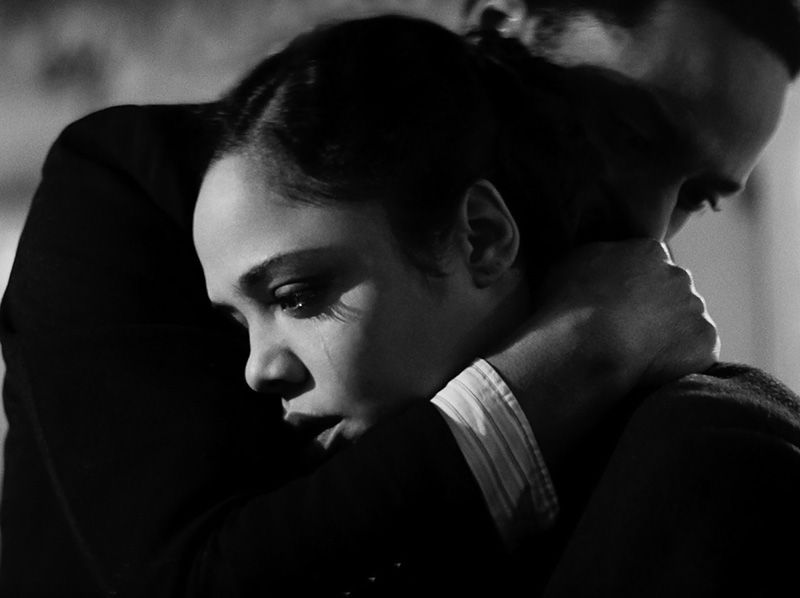
A pivotal scene in Passing takes place inside an apartment at Graham Court, a pre-war courtyard apartment building in Harlem that is similar in design to the Belnord and the Apthorp. All three were real estate ventures by the Astor family, and Graham Court was the first to be built. The Belnord meanwhile was recently the star filming location in Only Murders in the Building a new hit series on Hulu.
The interior of the apartment unit is also filmed at Graham Court, but the shot of the guests going up the staircase was filmed at the Center for Brooklyn History. Nora says, “I had a photo of [Graham Court] from a hundred years ago, and the courtyard literally looks exactly the same in this photo, even to the light posts, I feel like that building was sort of calling to us. It’s an incredible building full of beautiful, beautiful apartments and Felise’s apartment was so fun to work in because it’s almost completely unclear who is where because there’s a foyer and then there’s a living room, and another room and another room and it’s all sort of in a circle in real life but you can’t really tell.”
While watching Passing, keep an eye out also for the interior décor of the spaces, how Irene’s house feels lived in, homey and cared for, while the hotel room has an Art Deco theme — flashy and new. Nora makes use of texture and reflections, all to tell the story of the two women.


Watch Passing on Netflix today. Next, check out the filming locations for Only Murders in the Building.
Subscribe to our newsletter